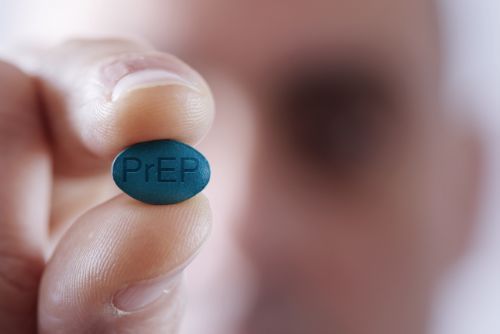Has HIV PrEP Uptake Increased Among High-Risk Persons?
Although HIV PrEP uptake is gradually increasing, usage remains low among key at-risk populations.

Pre-exposure prophylaxis (PrEP) is highly effective at preventing HIV. However, the individuals with the highest risk of HIV infection are often not currently on a PrEP regimen.
One study, presented at the recent IDWeek conference, sought to determine whether high-risk persons were taking emtricitabine and tenofovir disoproxil fumarate (FTC/TDF) PrEP. The investigators identified persons 15 years and older who were determined as high risk for HIV according to the IBM MarketScan® Commercial Claims and Multi-state Medicaid Databases.
“High risk” was defined by high-risk sexual behavior or rectal/repeated bacterial sexually transmitted infections (STIs). Participants were indexed by their earliest high-risk sexual behavior diagnosis, first rectal bacterial STI diagnosis, or second non-rectal bacterial STI within 12 months. Any comorbidities were assessed with a Charlson Comorbidity Index, modified to exclude HIV/AIDS.
The investigators found that FTC/TDF PrEP uptake increased from 0.1% in 2012 to 7.3% in 2018 among commercially insured individuals. Among high-risk persons with Medicaid insurance, PrEP uptake increased from 0.01% in 2012 to 0.5% by the end of the study period.
The greatest increase in PrEP usage was observed in individuals 35 years and older; this cohort saw a PrEP increase from 0.1% to 13%. The smallest increase was among 16-25-year-olds, who raised from 0.03% to 2.3% PrEP usage. The largest proportion of PrEP users were 25-34 years old, and the largest proportion of non-PrEP users were 18-24 years old.
Across all cohorts, the PrEP non-users were majority female (62.9%) and Black/African American (49.1%). PrEP users were more likely to identify as homosexual (46.6%) or bisexual (3.9%) than non-PrEP users. Individuals who used PrEP had more comorbidities than non-PrEP users with Medicaid, and were overall less likely to have fee-for-service insurance plans.
The investigators concluded that although PrEP uptake did increase across the board, usage rates remain suboptimal. PrEP prescriptions remained especially low among young, female, heterosexual, and Black/African American individuals. The investigators postulated this poor uptake is indicative of traditional FTC/TDF daily oral PrEP not fulfilling the needs of persons at high risk of HIV infection.
